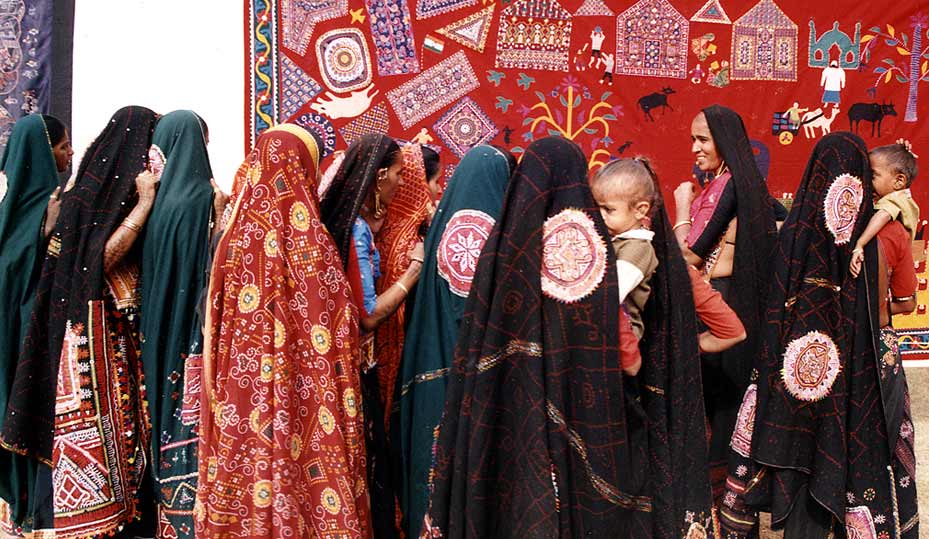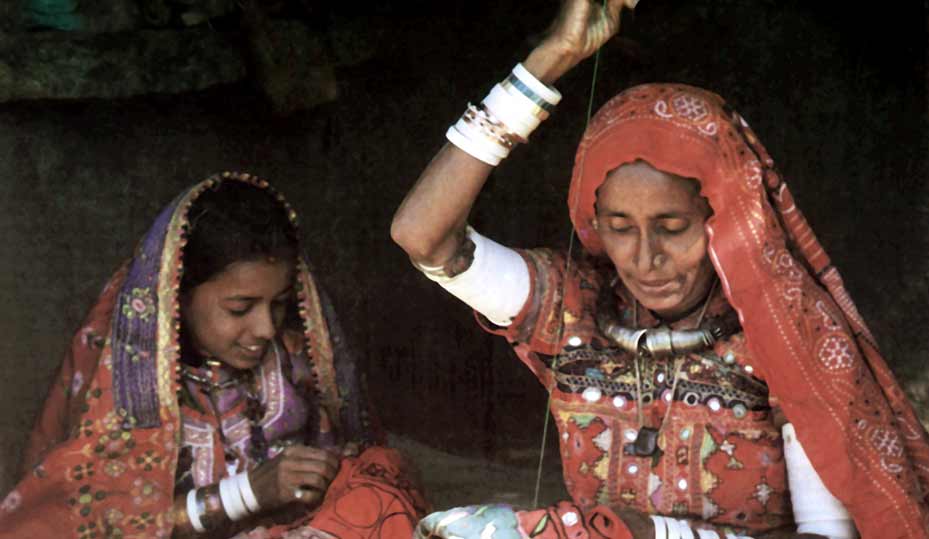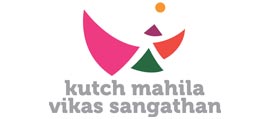Qasab
Commercialization and market growth of embroidery craft:
 Outsiders coming to Kutch got fascinated with these extraordinary hand worked items and would want to get some of these items for themselves. They started making offers to buy them. Some of the communities started selling the work, as they needed the money to cope up with the living pressures due to droughts and their restricted mobility.
Outsiders coming to Kutch got fascinated with these extraordinary hand worked items and would want to get some of these items for themselves. They started making offers to buy them. Some of the communities started selling the work, as they needed the money to cope up with the living pressures due to droughts and their restricted mobility.
The Govt. of Gujarat set up a Corporation for the development of Handicrafts in the State who set up selling outlets in big cities of Indiaand organized procurement of craftwork from the interior regions of Kutch. In years of droughts special purchases were made to provide relief to many of these communities living in the arid interiors. With a sudden boom the focus was more on quantity than on quality, which led to quick and mass production. This period also saw the birth and growth of 3 to 4 development organizations in the region that started actively working on the ground for the development of embroidery craft and create income generation opportunities for a few thousand of the thousands of embroidery craftswomen inKutch. Their focused approach and a vision for preservation & development brought stability for the artisans under their fold.
While the Corporation found it easier to work with handicrafts such as block prints, weaves, tie & dye, leather, bell making, lacquer work etc. which were primary source of income for its artisans, they found it difficult after some time to manage the procurement & production of embroidery craft.
Genesis of KMVS-QASAB:
 The Corporation wanted to know about the ground realities and requested a Development Support Organisation to help them in this process. This led to the formation of KMVS, which was started by a group of young women in collaboration with rural women ofKutch, sponsored by the Gujarat State Handicraft Development Corporation, Gujarat Women & Child Development Corporation & Jan Vikas, Ahmedabad. The founders of KMVS wanted to look at not just the craft aspect as an income generation programme, but to work for the socio-economic empowerment and development of rural women in these interior areas of Kutch District with a holistic approach.
The Corporation wanted to know about the ground realities and requested a Development Support Organisation to help them in this process. This led to the formation of KMVS, which was started by a group of young women in collaboration with rural women ofKutch, sponsored by the Gujarat State Handicraft Development Corporation, Gujarat Women & Child Development Corporation & Jan Vikas, Ahmedabad. The founders of KMVS wanted to look at not just the craft aspect as an income generation programme, but to work for the socio-economic empowerment and development of rural women in these interior areas of Kutch District with a holistic approach.
